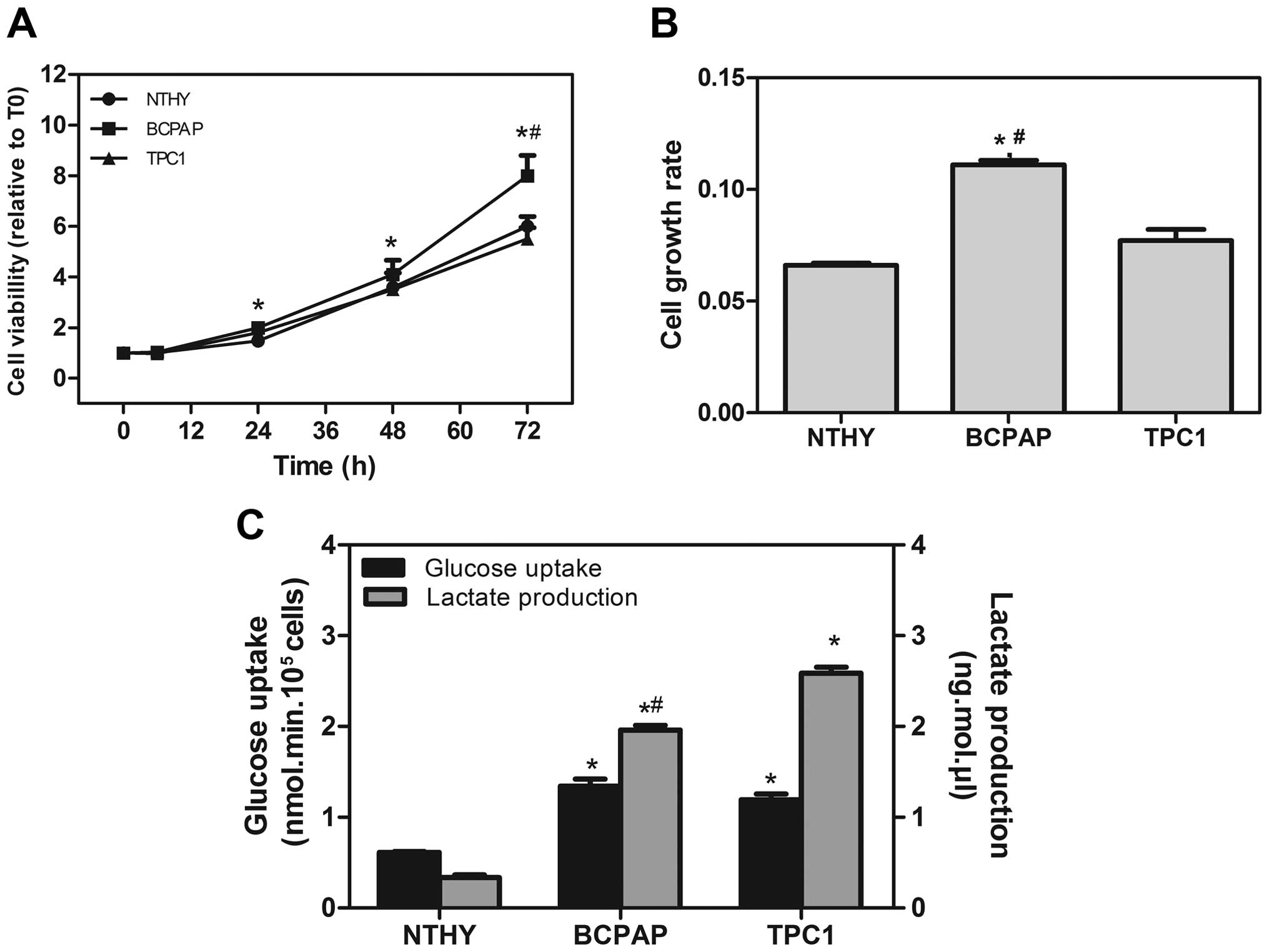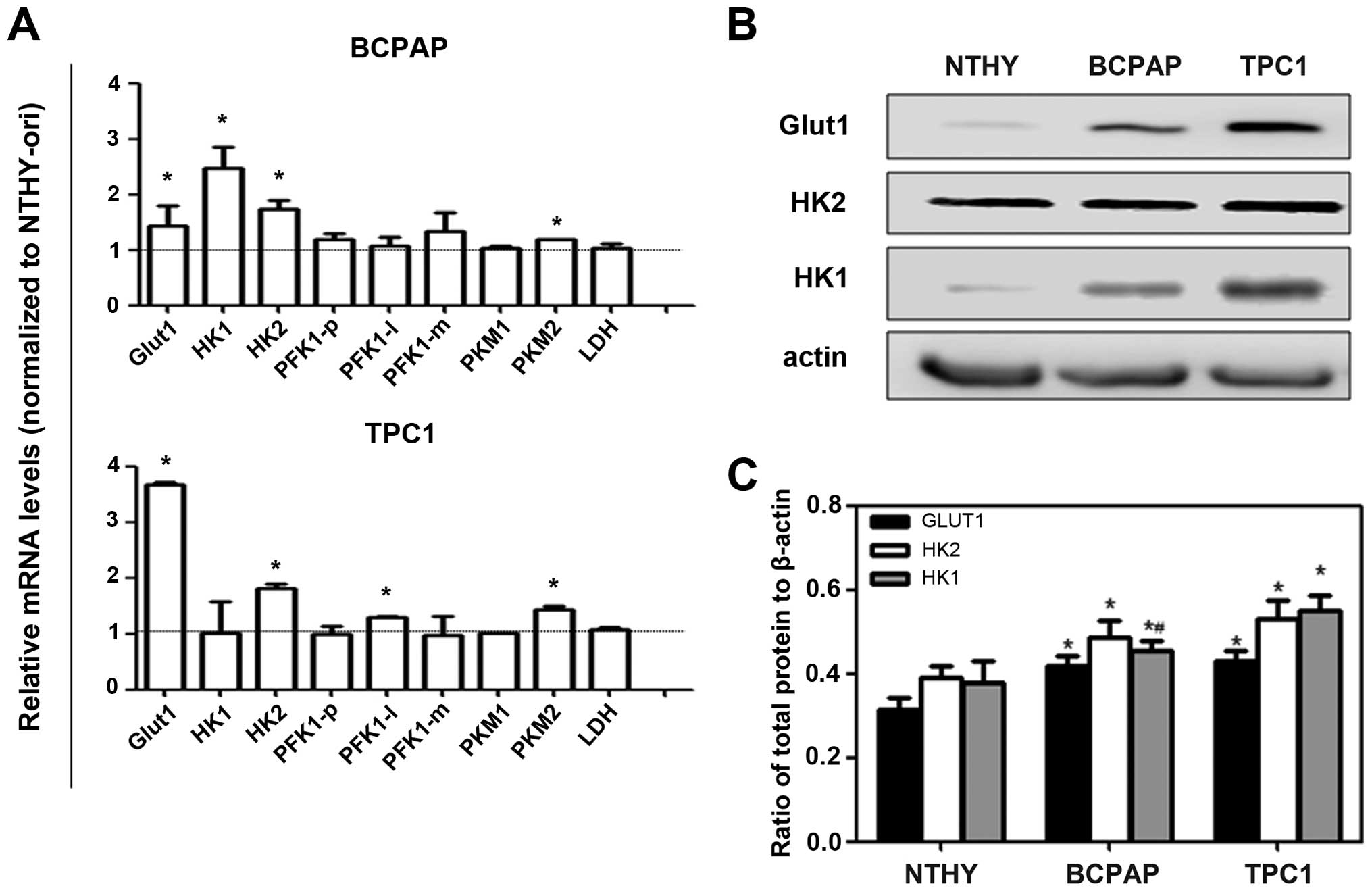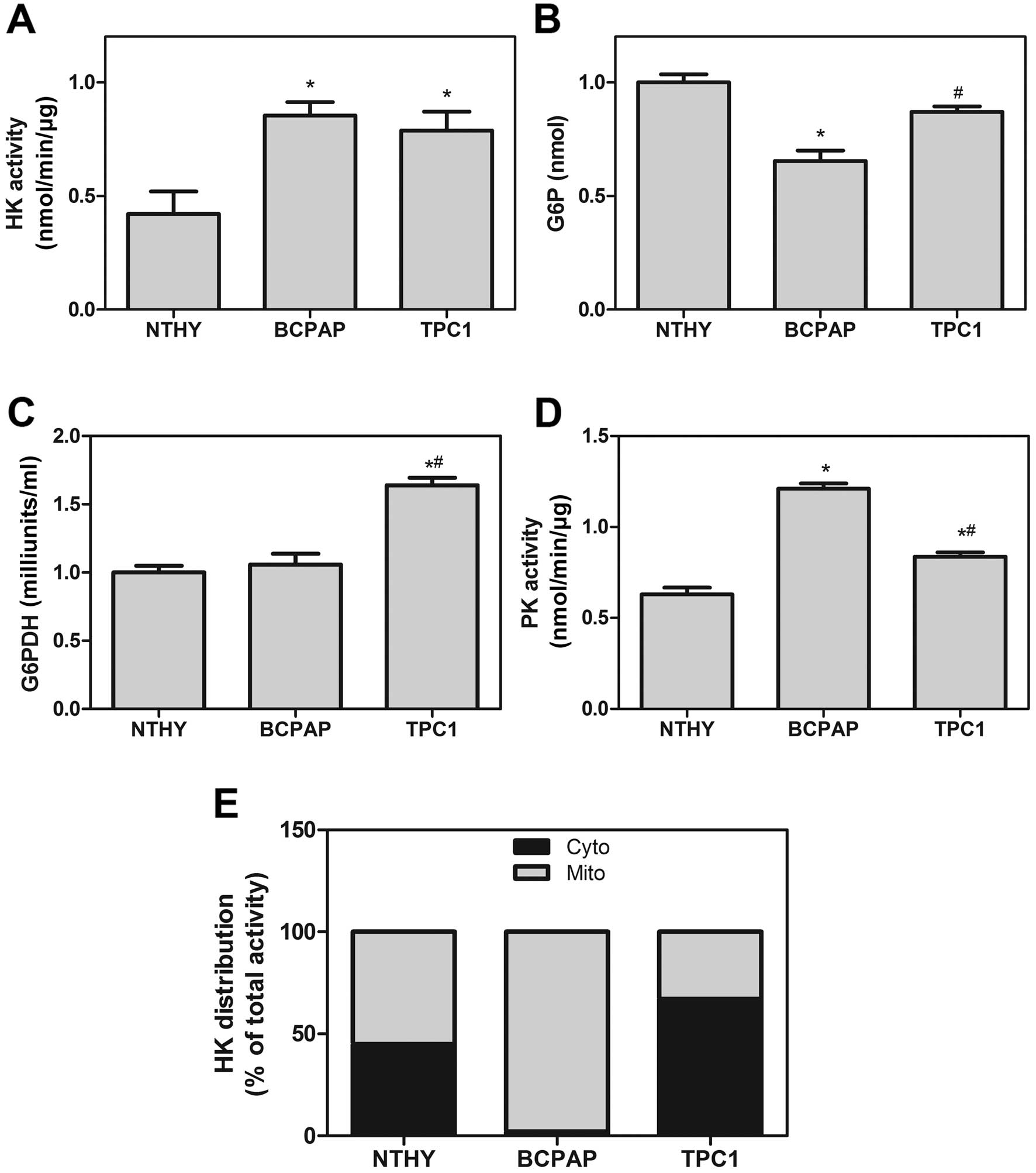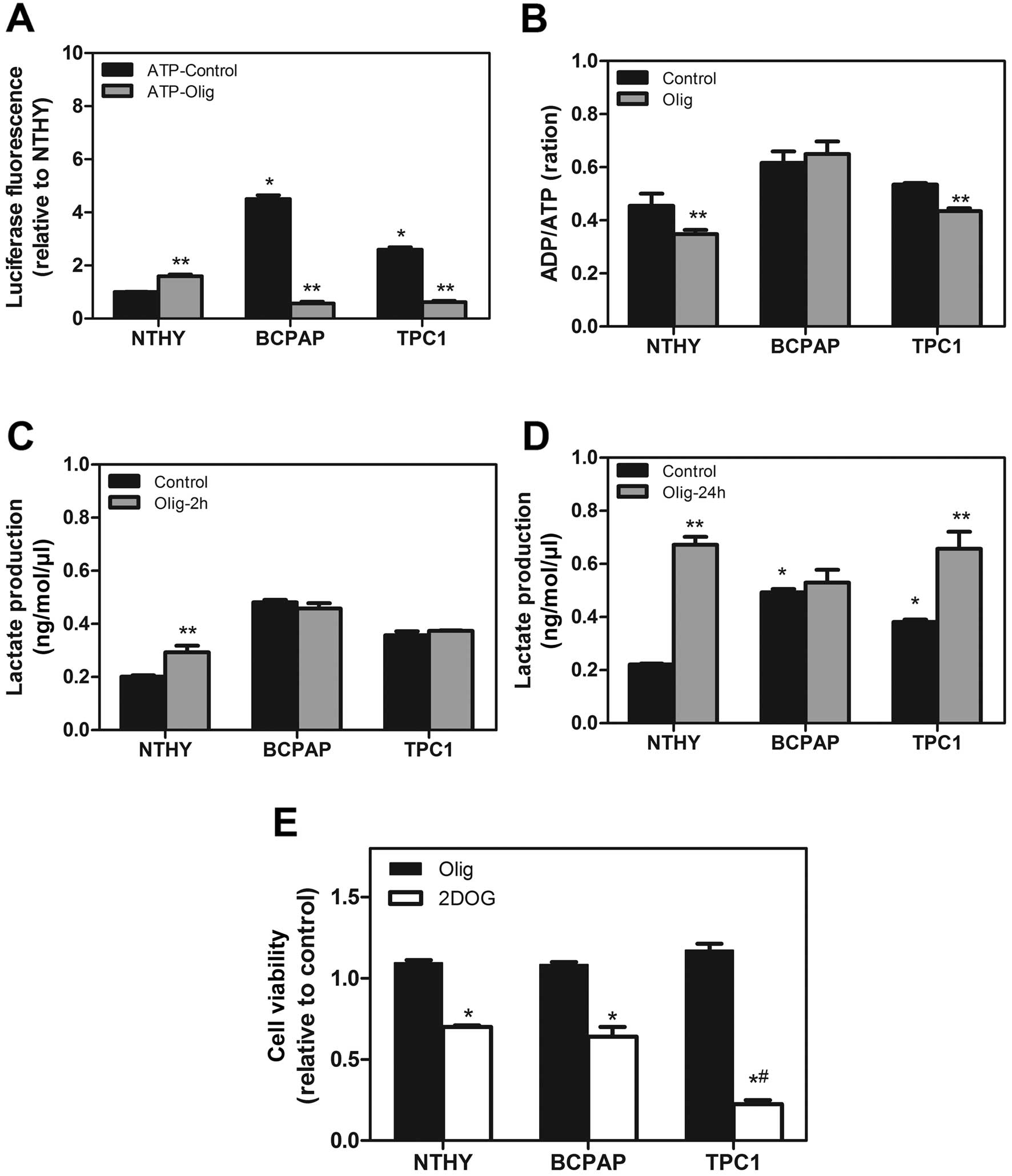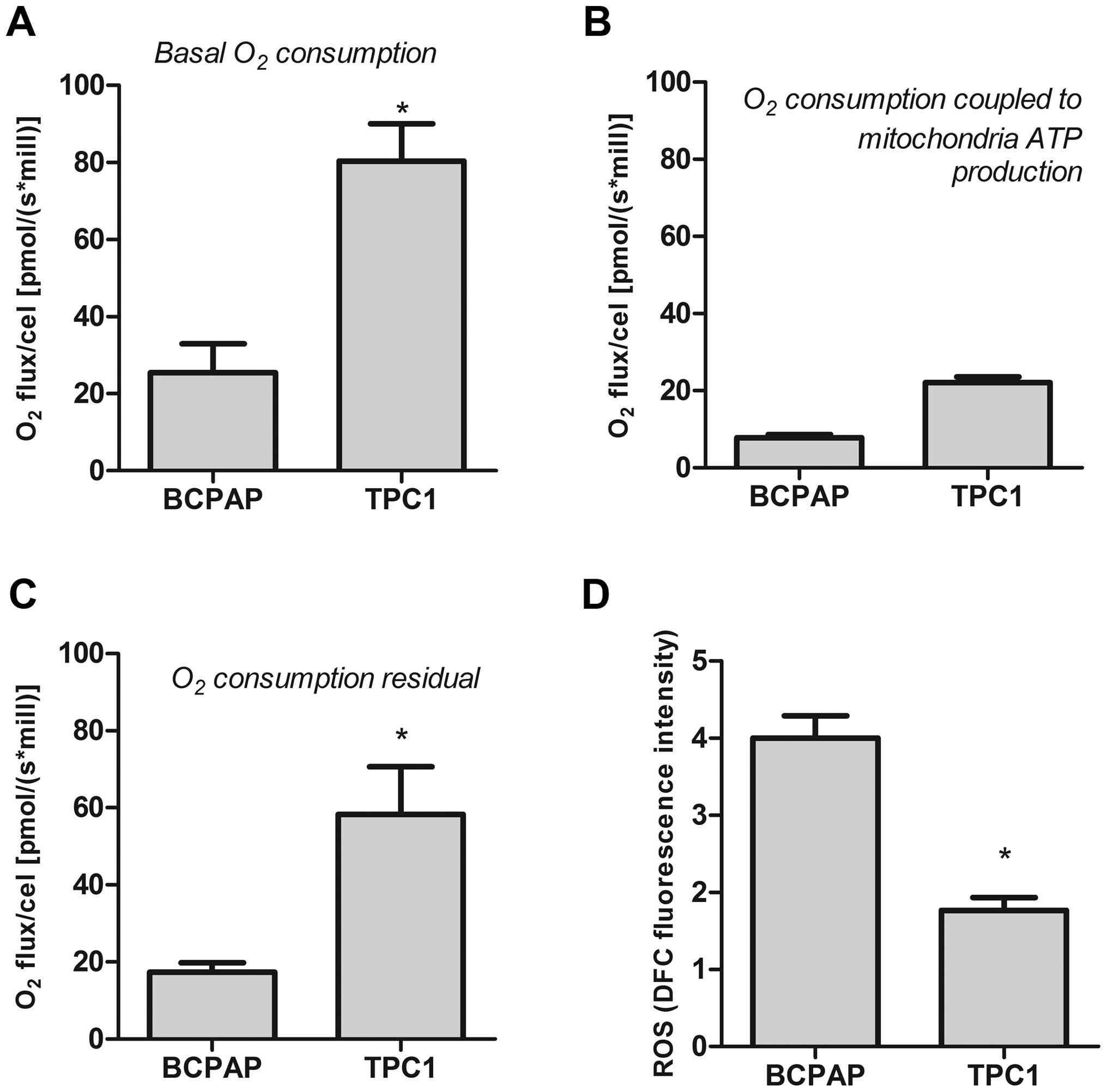|
1
|
Davies L and Welch HG: Increasing
incidence of thyroid cancer in the United States, 1973–2002. JAMA.
295:2164–2167. 2006. View Article : Google Scholar : PubMed/NCBI
|
|
2
|
Pilli T, Prasad KV, Jayarama S, Pacini F
and Prabhakar BS: Potential utility and limitations of thyroid
cancer cell lines as models for studying thyroid cancer. Thyroid.
19:1333–1342. 2009. View Article : Google Scholar : PubMed/NCBI
|
|
3
|
Pacini F, Cetani F, Miccoli P, Mancusi F,
Ceccarelli C, Lippi F, Martino E and Pinchera A: Outcome of 309
patients with metastatic differentiated thyroid carcinoma treated
with radioiodine. World J Surg. 18:600–604. 1994. View Article : Google Scholar : PubMed/NCBI
|
|
4
|
Nikiforova MN and Nikiforov YE: Molecular
genetics of thyroid cancer: Implications for diagnosis, treatment
and prognosis. Expert Rev Mol Diagn. 8:83–95. 2008. View Article : Google Scholar : PubMed/NCBI
|
|
5
|
van Staveren WC, Solís DW, Delys L, Duprez
L, Andry G, Franc B, Thomas G, Libert F, Dumont JE, Detours V, et
al: Human thyroid tumor cell lines derived from different tumor
types present a common dedifferentiated phenotype. Cancer Res.
67:8113–8120. 2007. View Article : Google Scholar : PubMed/NCBI
|
|
6
|
Andrade BM and Carvalho DP: Perspective of
the AMP-activated kinase (AMPK) signaling pathway in thyroid
cancer. Biosci Rep. 34:181–187. 2014. View Article : Google Scholar
|
|
7
|
Andrade BM, Cazarin J, Zancan P and
Carvalho DP: AMP-activated protein kinase upregulates glucose
uptake in thyroid PCCL3 cells independent of thyrotropin. Thyroid.
22:1063–1068. 2012. View Article : Google Scholar : PubMed/NCBI
|
|
8
|
Kimura ET, Nikiforova MN, Zhu Z, Knauf JA,
Nikiforov YE and Fagin JA: High prevalence of BRAF mutations in
thyroid cancer: Genetic evidence for constitutive activation of the
RET/PTC-RAS-BRAF signaling pathway in papillary thyroid carcinoma.
Cancer Res. 63:1454–1457. 2003.PubMed/NCBI
|
|
9
|
Xing M: BRAF mutation in thyroid cancer.
Endocr Relat Cancer. 12:245–262. 2005. View Article : Google Scholar : PubMed/NCBI
|
|
10
|
Nikiforov YE and Nikiforova MN: Molecular
genetics and diagnosis of thyroid cancer. Nat Rev Endocrinol.
7:569–580. 2011. View Article : Google Scholar : PubMed/NCBI
|
|
11
|
Xing M: Molecular pathogenesis and
mechanisms of thyroid cancer. Nat Rev Cancer. 13:184–199. 2013.
View Article : Google Scholar : PubMed/NCBI
|
|
12
|
Bläser D, Maschauer S, Kuwert T and Prante
O: In vitro studies on the signal transduction of thyroidal uptake
of 18F-FDG and 131I–Iodide. J Nucl Med.
47:1382–1388. 2006.PubMed/NCBI
|
|
13
|
Gatenby RA and Gillies RJ: Why do cancers
have high aerobic glycolysis? Nat Rev Cancer. 4:891–899. 2004.
View Article : Google Scholar : PubMed/NCBI
|
|
14
|
Warburg O: On respiratory impairment in
cancer cells. Science. 124:269–270. 1956.PubMed/NCBI
|
|
15
|
Gonzalez MJ, Massari JR Miranda, Duconge
J, Riordan NH, Ichim T, Quintero-Del-Rio AI and Ortiz N: The
bio-energetic theory of carcinogenesis. Med Hypotheses. 79:433–439.
2012. View Article : Google Scholar : PubMed/NCBI
|
|
16
|
Zhao Y, Butler EB and Tan M: Targeting
cellular metabolism to improve cancer therapeutics. Cell Death Dis.
4:e5322013. View Article : Google Scholar : PubMed/NCBI
|
|
17
|
Amoêdo ND, Valencia JP, Rodrigues MF,
Galina A and Rumjanek FD: How does the metabolism of tumor cells
differ from that of normal cells. Biosci Rep. 33:e000802013.doi:
10.1042/BSR20130066. View Article : Google Scholar : PubMed/NCBI
|
|
18
|
Heiden MG Vander, Cantley LC and Thompson
CB: Under-standing the Warburg effect: The metabolic requirements
of cell proliferation. Science. 324:1029–1033. 2009. View Article : Google Scholar : PubMed/NCBI
|
|
19
|
Schmittgen TD and Livak KJ: Analyzing
real-time PCR data by the comparative C(T) method. Nat Protoc.
3:1101–1108. 2008. View Article : Google Scholar : PubMed/NCBI
|
|
20
|
Coelho RG, Calaça IC, Celestrini DM,
Correia AH, Costa MA and Sola-Penna M: Clotrimazole disrupts
glycolysis in human breast cancer without affecting non-tumoral
tissues. Mol Genet Metab. 103:394–398. 2011. View Article : Google Scholar : PubMed/NCBI
|
|
21
|
Hanahan D and Weinberg RA: Hallmarks of
cancer: The next generation. Cell. 144:646–674. 2011. View Article : Google Scholar : PubMed/NCBI
|
|
22
|
Moreno-Sánchez R, Marín-Hernández A,
Saavedra E, Pardo JP, Ralph SJ and Rodríguez-Enríquez S: Who
controls the ATP supply in cancer cells? Biochemistry lessons to
understand cancer energy metabolism. Int J Biochem Cell Biol.
50:10–23. 2014. View Article : Google Scholar : PubMed/NCBI
|
|
23
|
Soga T: Cancer metabolism: Key players in
metabolic reprogramming. Cancer Sci. 104:275–281. 2013. View Article : Google Scholar : PubMed/NCBI
|
|
24
|
Vaupel P and Mayer A: Availability, not
respiratory capacity governs oxygen consumption of solid tumors.
Int J Biochem Cell Biol. 44:1477–1481. 2012. View Article : Google Scholar : PubMed/NCBI
|
|
25
|
Chen EI, Hewel J, Krueger JS, Tiraby C,
Weber MR, Kralli A, Becker K, Yates JR III and Felding-Habermann B:
Adaptation of energy metabolism in breast cancer brain metastases.
Cancer Res. 67:1472–1486. 2007. View Article : Google Scholar : PubMed/NCBI
|
|
26
|
Chen JQ and Russo J: Dysregulation of
glucose transport, glycolysis, TCA cycle and glutaminolysis by
oncogenes and tumor suppressors in cancer cells. Biochim Biophys
Acta. 1826:370–384. 2012.PubMed/NCBI
|
|
27
|
Arciuch VG Antico, Russo MA, Kang KS and
Di Cristofano A: Inhibition of AMPK and Krebs cycle gene expression
drives metabolic remodeling of Pten-deficient preneoplastic thyroid
cells. Cancer Res. 73:5459–5472. 2013. View Article : Google Scholar : PubMed/NCBI
|
|
28
|
Dodson M, Darley-Usmar V and Zhang J:
Cellular metabolic and autophagic pathways: Traffic control by
redox signaling. Free Radic Biol Med. 63:207–221. 2013. View Article : Google Scholar : PubMed/NCBI
|
|
29
|
Stankov K, Biondi A, D'Aurelio M, Gasparre
G, Falasca A, Romeo G and Lenaz G: Mitochondrial activities of a
cell line derived from thyroid Hürthle cell tumors. Thyroid.
16:325–331. 2006. View Article : Google Scholar : PubMed/NCBI
|
|
30
|
Mathupala SP, Ko YH and Pedersen PL:
Hexokinase-2 bound to mitochondria: Cancer's stygian link to the
‘Warburg effect’ and a pivotal target for effective therapy. Semin
Cancer Biol. 19:17–24. 2009. View Article : Google Scholar : PubMed/NCBI
|
|
31
|
Ros S and Schulze A: Glycolysis back in
the limelight: Systemic targeting of HK2 blocks tumor growth.
Cancer Discov. 3:1105–1107. 2013. View Article : Google Scholar : PubMed/NCBI
|
|
32
|
Pastorino JG, Shulga N and Hoek JB:
Mitochondrial binding of hexokinase II inhibits Bax-induced
cytochrome c release and apoptosis. J Biol Chem. 277:7610–7618.
2002. View Article : Google Scholar : PubMed/NCBI
|
|
33
|
Marini C, Salani B, Massollo M, Amaro A,
Esposito AI, Orengo AM, Capitanio S, Emionite L, Riondato M,
Bottoni G, et al: Direct inhibition of hexokinase activity by
metformin at least partially impairs glucose metabolism and tumor
growth in experimental breast cancer. Cell Cycle. 12:3490–3499.
2013. View Article : Google Scholar : PubMed/NCBI
|
|
34
|
Wilson JE: Isozymes of mammalian
hexokinase: Structure, subcellular localization and metabolic
function. J Exp Biol. 206:2049–2057. 2003. View Article : Google Scholar : PubMed/NCBI
|
|
35
|
Mazurek S: Pyruvate kinase type M2: a key
regulator within the tumour metabolome and a tool for metabolic
profiling of tumours. Ernst Schering Found Symp Proc. 2007:99–124.
2007.
|
|
36
|
Vidal AP, Andrade BM, Vaisman F, Cazarin
J, Pinto LF, Breitenbach MM, Corbo R, Caroli-Bottino A, Soares F,
Vaisman M, et al: AMP-activated protein kinase signaling is
upregulated in papillary thyroid cancer. Eur J Endocrinol.
169:521–528. 2013. View Article : Google Scholar : PubMed/NCBI
|
|
37
|
Faubert B, Boily G, Izreig S, Griss T,
Samborska B, Dong Z, Dupuy F, Chambers C, Fuerth BJ, Viollet B, et
al: AMPK is a negative regulator of the Warburg effect and
suppresses tumor growth in vivo. Cell Metab. 17:113–124. 2013.
View Article : Google Scholar : PubMed/NCBI
|
|
38
|
Cazarin JM, Coelho RG, Hecht F, Andrade BM
and Carvalho DP: 5′-AMP-activated protein kinase regulates
papillary (TPC-1 and BCPAP) thyroid cancer cell survival,
migration, invasion, and epithelial-to-mesenchymal transition.
Thyroid. 26:933–942. 2016. View Article : Google Scholar : PubMed/NCBI
|















